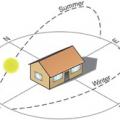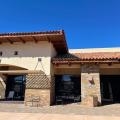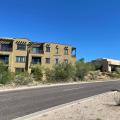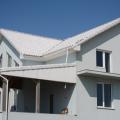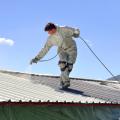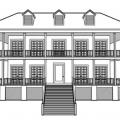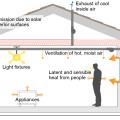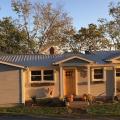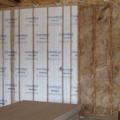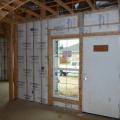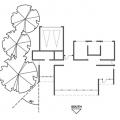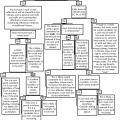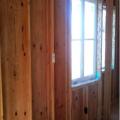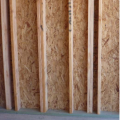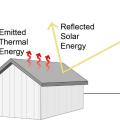Showing results 1 - 36 of 36
Example of the advanced framing technique, double-stud wall cavity, which will later be filled with blown insulation
A typical Las Vegas hot-dry climate home made of wood frame construction and insulated with R-25 expanded polystyrene externally over a drainage plane, with an unvented wood frame insulated attic and roof assembly.
Calculate projection factor (PF) by dividing overhang (A) by length of window (B).
East- and west-facing walls receive significantly more sun than north- and south-facing walls in the summertime
In hot climate zones, shade building surface with vegetation for passive cooling.
Light colors have been used on exterior walls and roofs to keep buildings cooler in hot climates for centuries, as shown by this traditional building in Morocco, built in the early 1800s
Reduce thermal bridging in hot climate zones by using an intersecting exterior wall framing technique as shown here.
Right - Covered porches protect the south-facing windows and doors of this building from solar heat gain.
Right – Deep overhangs, pergolas, and covered entryways minimize heat gain in this commercial building in the hot-dry climate.
Right – deeply inset entryways and overhangs provide shade to reduce solar heat entry to this building.
Right – Strategically placed trees provide shade to the south-facing windows of this building.
Right – the building on the right employs light-colored walls, deep tinting, and deeply recessed windows to minimize solar heat gain
Right – thermal mass walls, small windows, and recessed porch and trees on the south side of this southwest home help to minimize solar heat gain.
Right – this commercial building employs good techniques to resist solar heat gain: awnings and pergolas over windows, recessed windows and entryways, deep tinting on glass, and shade plants.
Right – This home uses a light-colored exterior wall to reduce solar heat gain
Right – This home uses light tan stucco and white trim to reduce solar heat gain.
Right – This metal roof is being coated with a cool (high SRI) coating to reduce solar heat gain
Right- Landscaping shades the entry on the south west corner of this hot dry climate building.
Sources of heat gain in a house include solar gains, infiltration, conduction through walls and roof, occupants, and internal equipment
Sources of heat gain in a house include solar gains, infiltration, conduction through walls and roof, occupants, and internal equipment
This home uses light-colored standard paints and finishes on siding and roofing materials to reduce cooling loads without adding material cost.
This hot climate zone home uses high quality batt insulation between studs to insulate this connecting garage wall.
This hot climate zone home uses high quality batt insulation to insulate truss-joist headers.
This house is sited so the existing trees will shade the west-facing walls to minimize summertime heat gain
This simplified decision tree can help a homeowner or contractor assess how appropriate a cool roof or wall will be for a particular home
This wall and window assembly has excessive framing around the windows, which can lead to heat gain in how climate zones.
Use a truss joist header assembly as shown here to reduce thermal bridging in hot climate zones.
Using roof and wall materials with a high Solar Reflectance Index (SRI) will reduce heat gains.
Wall surfaces having high solar reflectance and high thermal emittance will remain cooler when exposed to direct sunlight.
White walls and roofs; overhangs and awnings; and operable shutters and garden walls all help to keep out unwanted solar heat gain providing cool interiors for this Florida home.
Wrong - this building provides no overhangs, minimal window shading, and clear window glass resulting in high solar heat gain.
Wrong – The south side of this building in Arizona has very little architectural or landscape shading to block solar heat gain.
Wrong – This multi family building appears to be done in traditional southwest architecture but the lack of useful overhangs, dark colored walls, and lack of tinting on windows will result in significant solar heat gain.



